Abstract
Two cebus monkeys, with many years of experience matching a variety of static visual stimuli (forms and colors) within a standard matching-to-sample paradigm, were trained to press a left lever when a pair of displayed static stimuli were the same and to press a right lever when they were different. After learning the same/different task, the monkeys were tested for transfer to dynamic visual stimuli (flashing versus steady green disks), with which they had no previous experience. Both failed to transfer to the dynamic stimuli. A third monkey, also with massive past experience matching static visual stimuli, was tested for transfer to the dynamic stimuli within our standard matching paradigm, and it, too, failed. All 3 subjects were unable to reach a moderate acquisition criterion despite as many as 52 sessions of training with the dynamic stimuli. These results provide further evidence that, in monkeys, the matching (or identity) concept has a very limited reach; they consequently do not support the view held by some theorists that an abstract matching concept based on physical similarity is a general endowment of animals.
Full text
PDF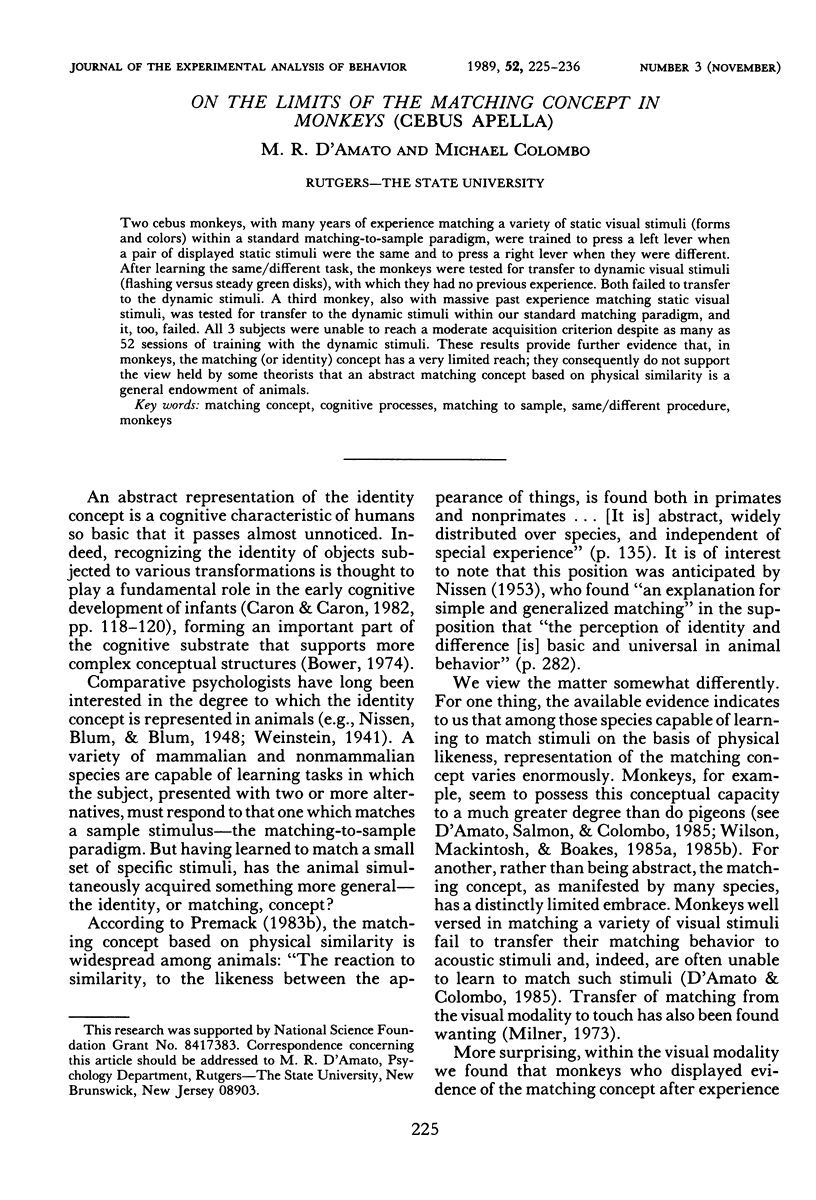
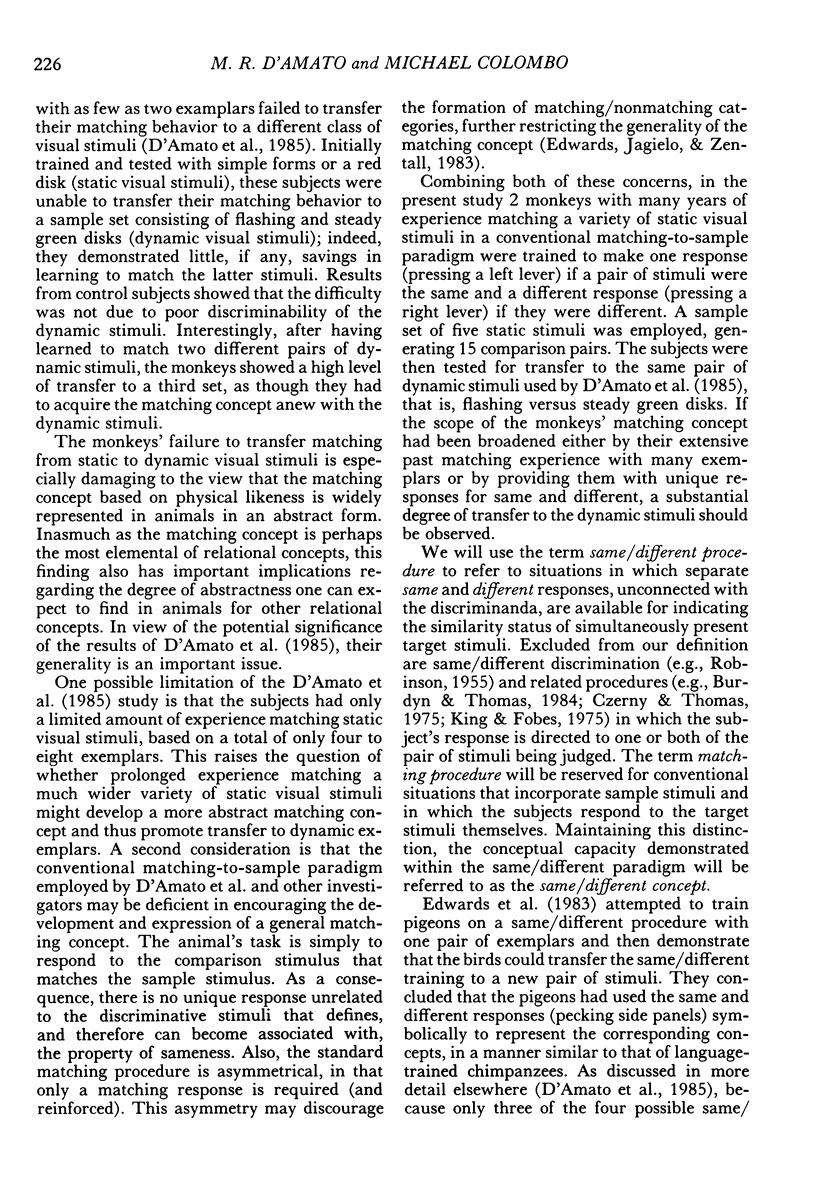
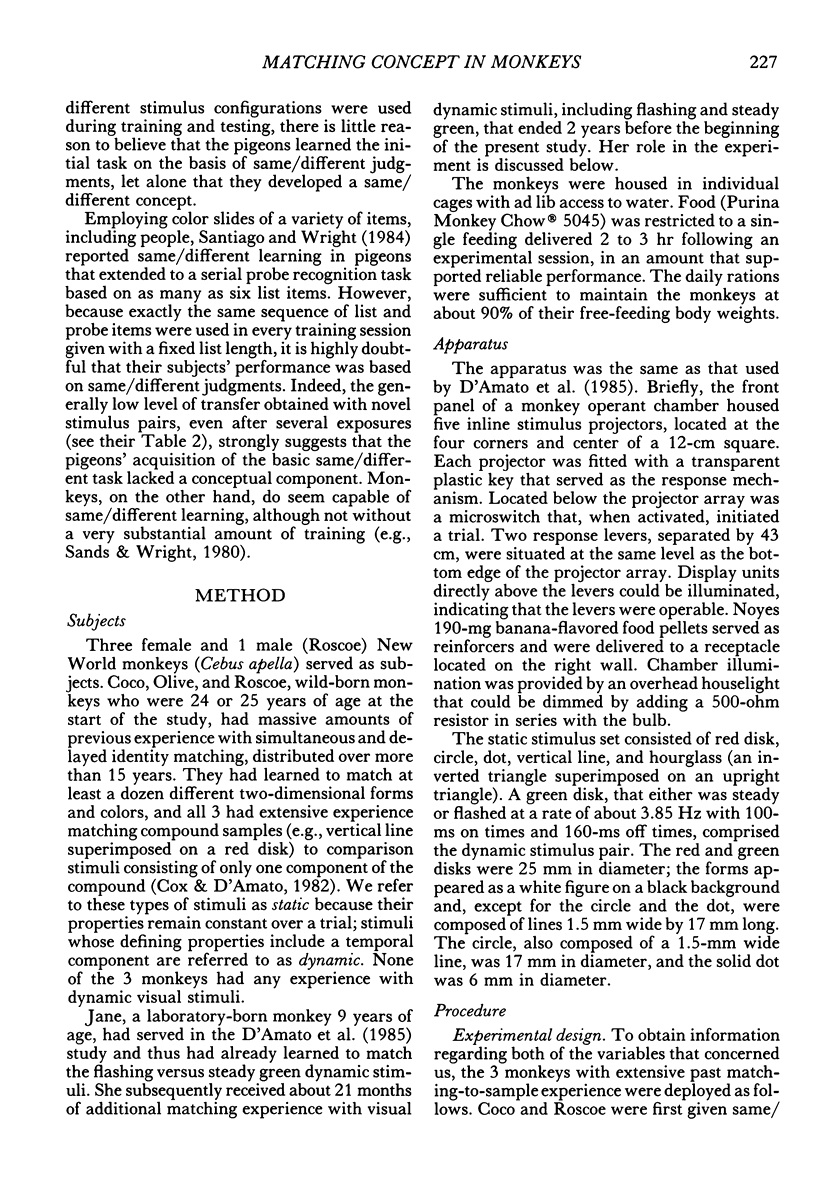
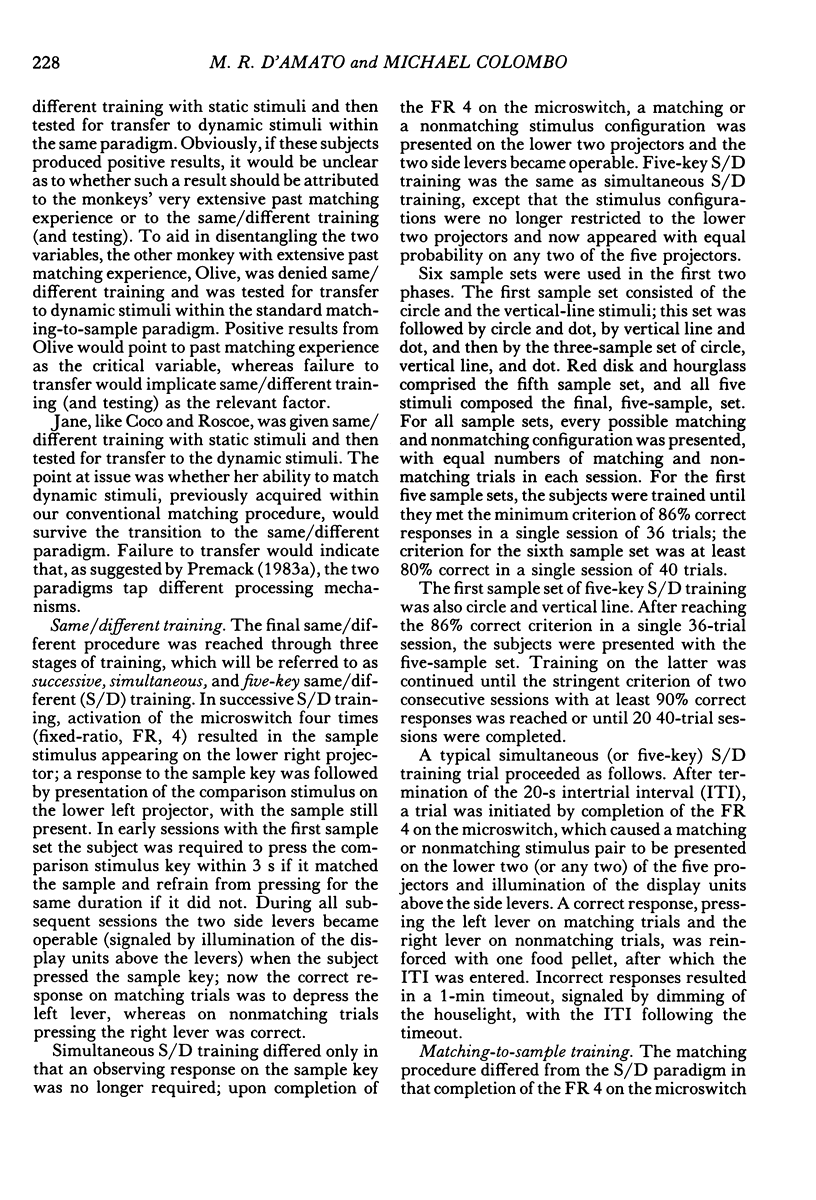
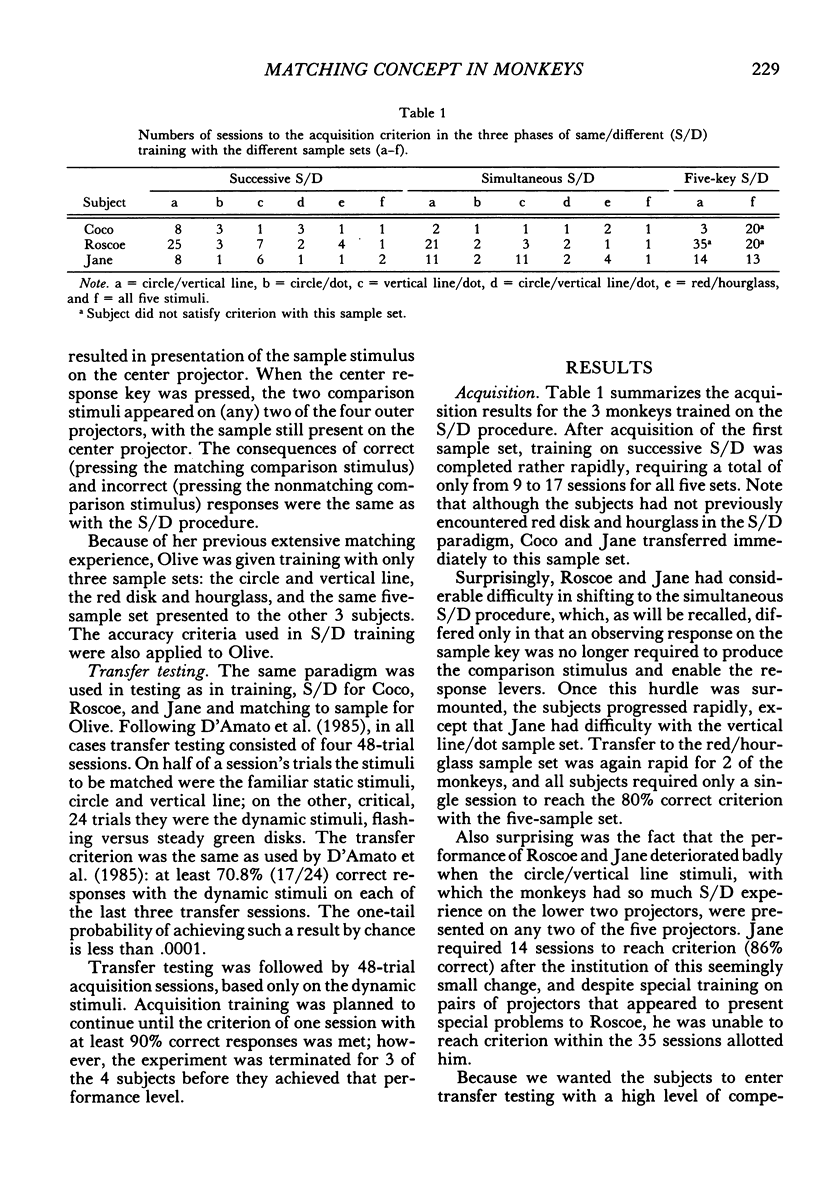
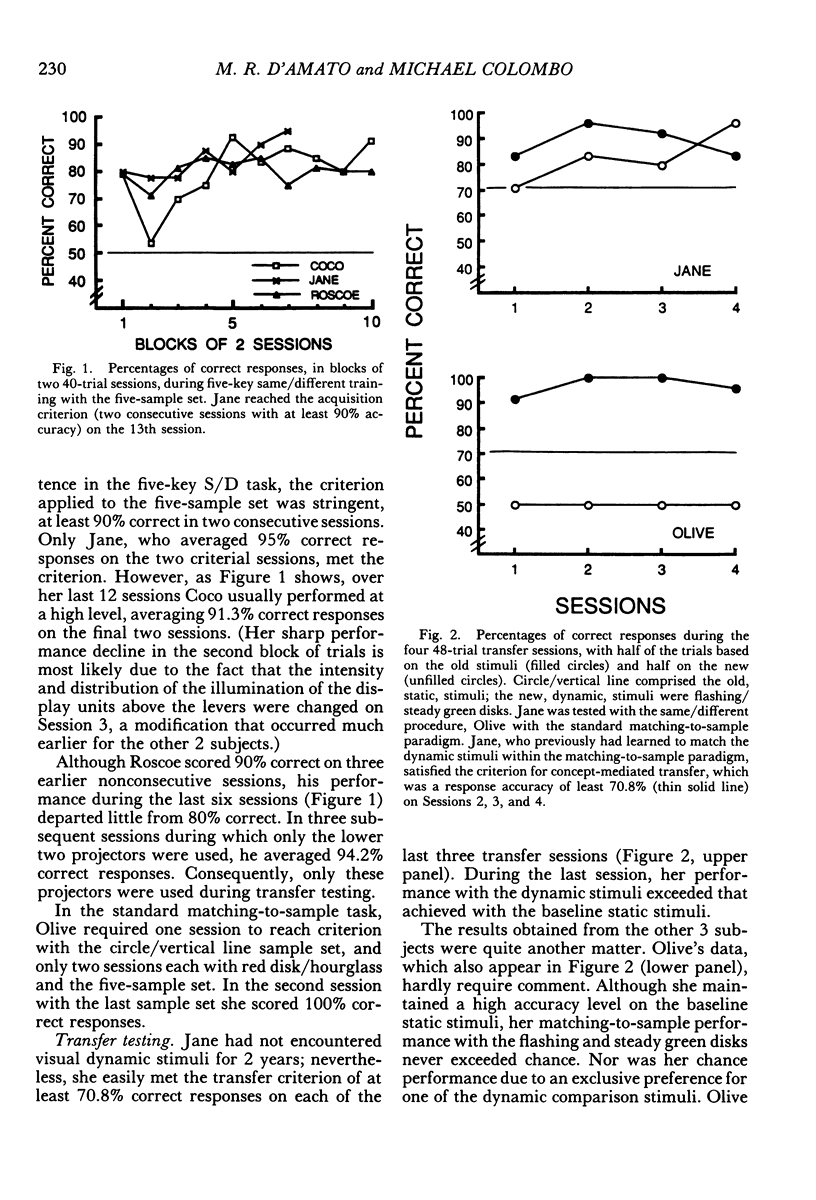
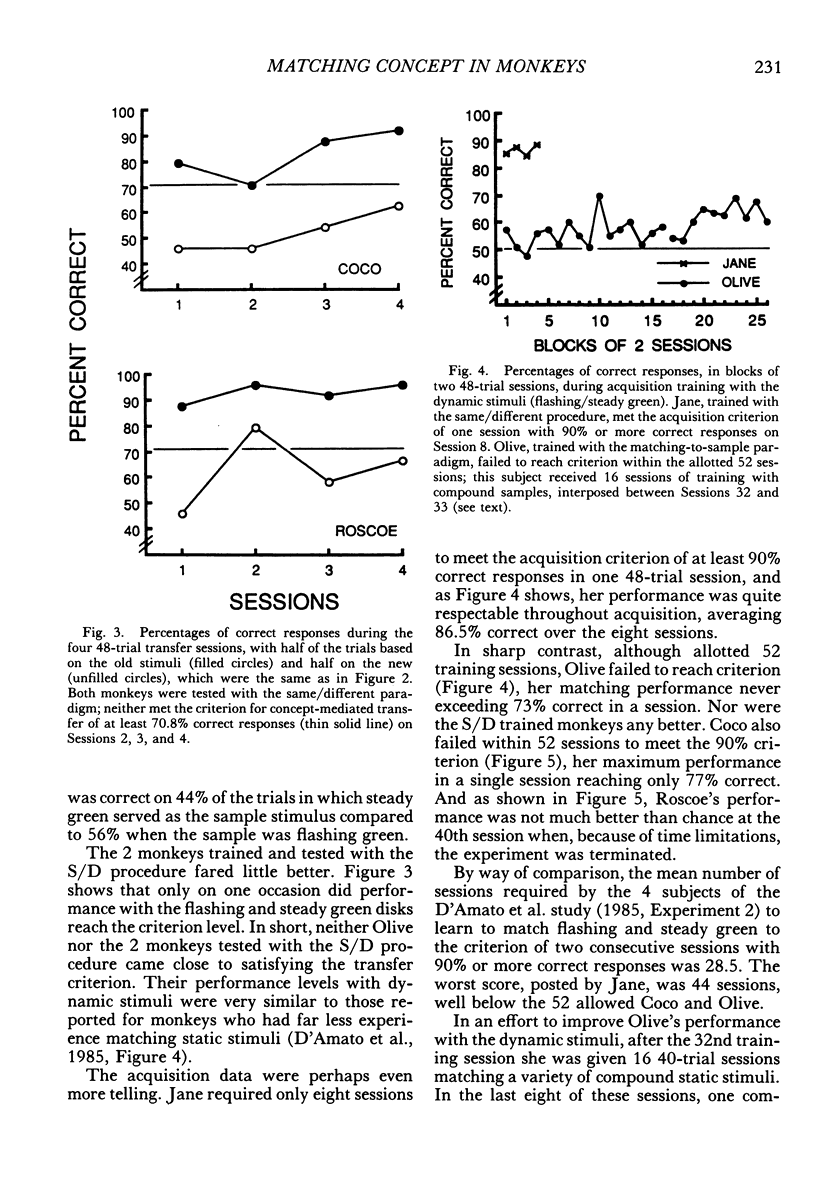
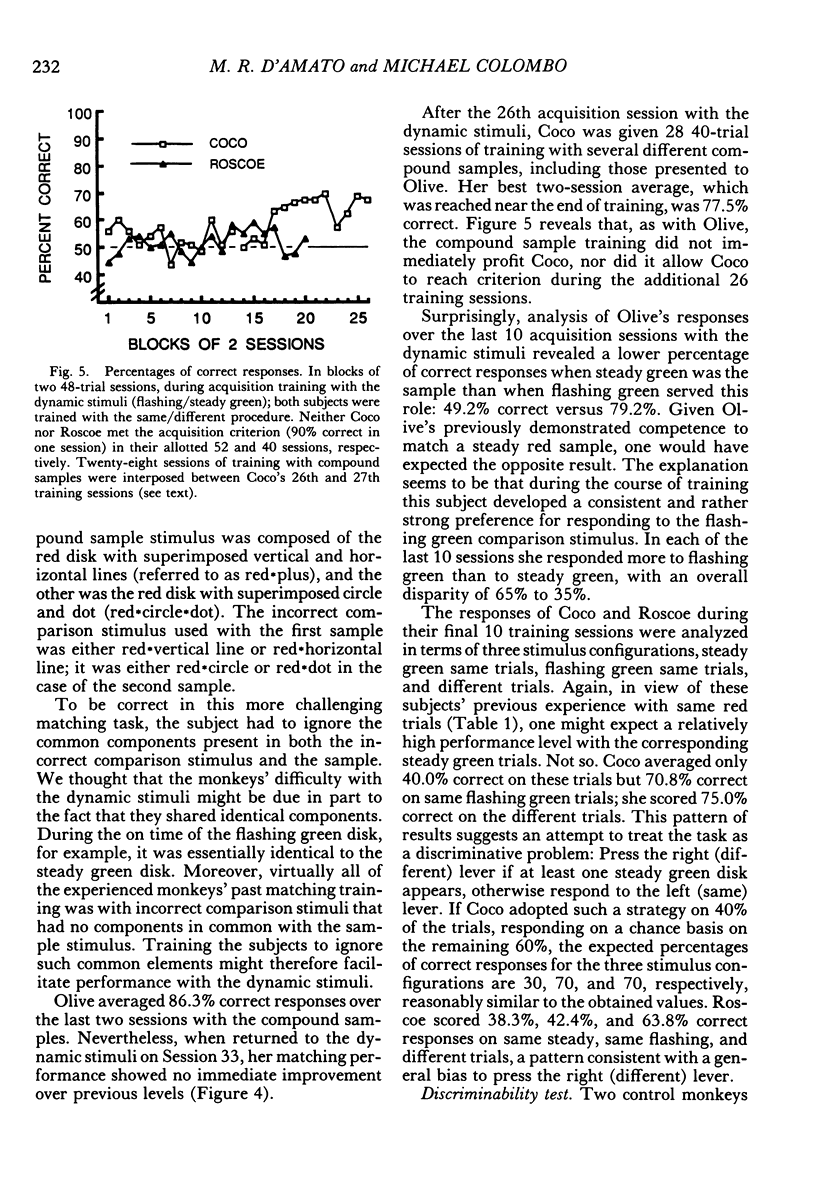
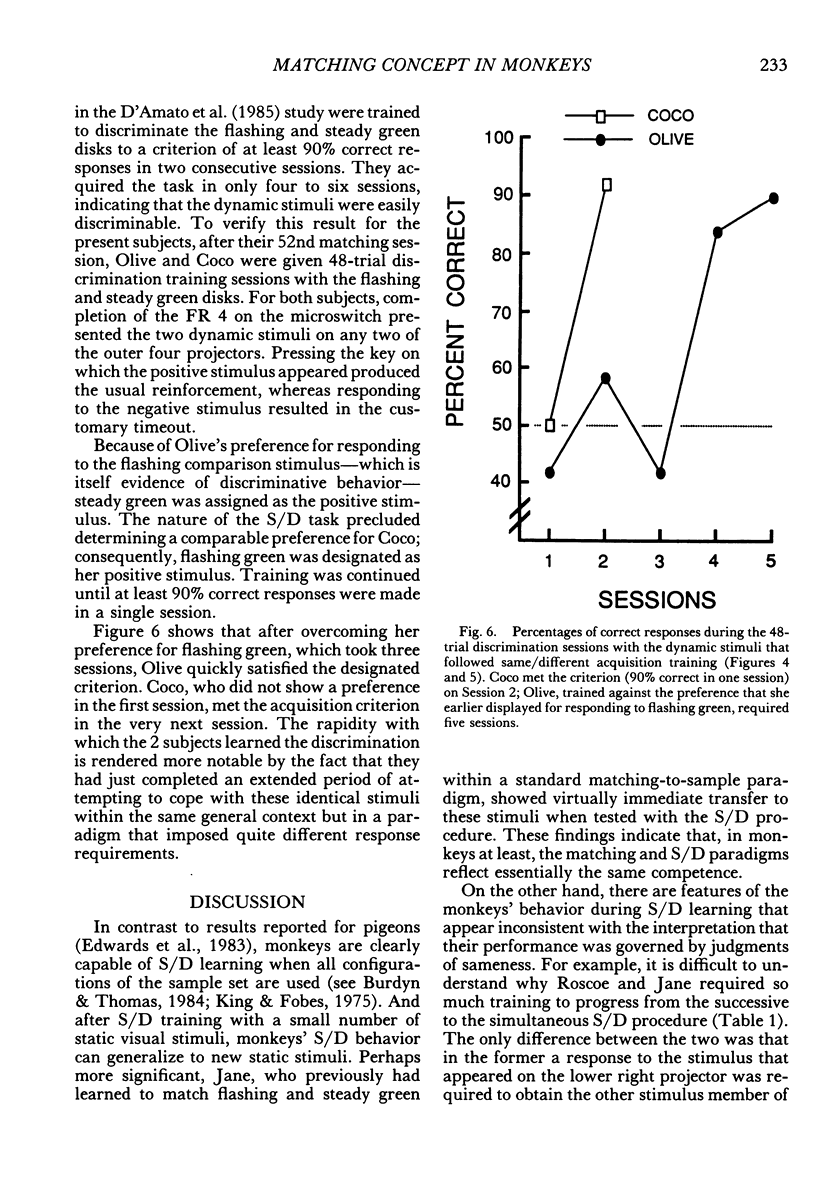
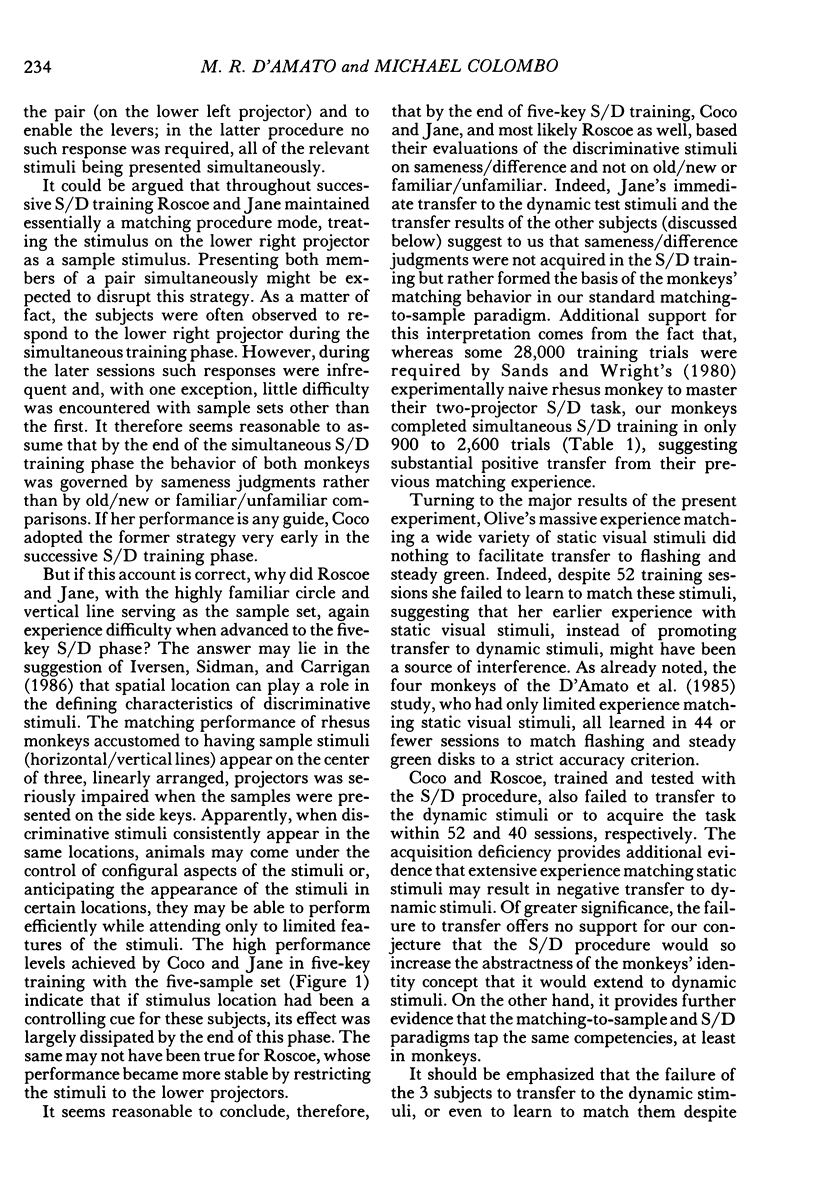
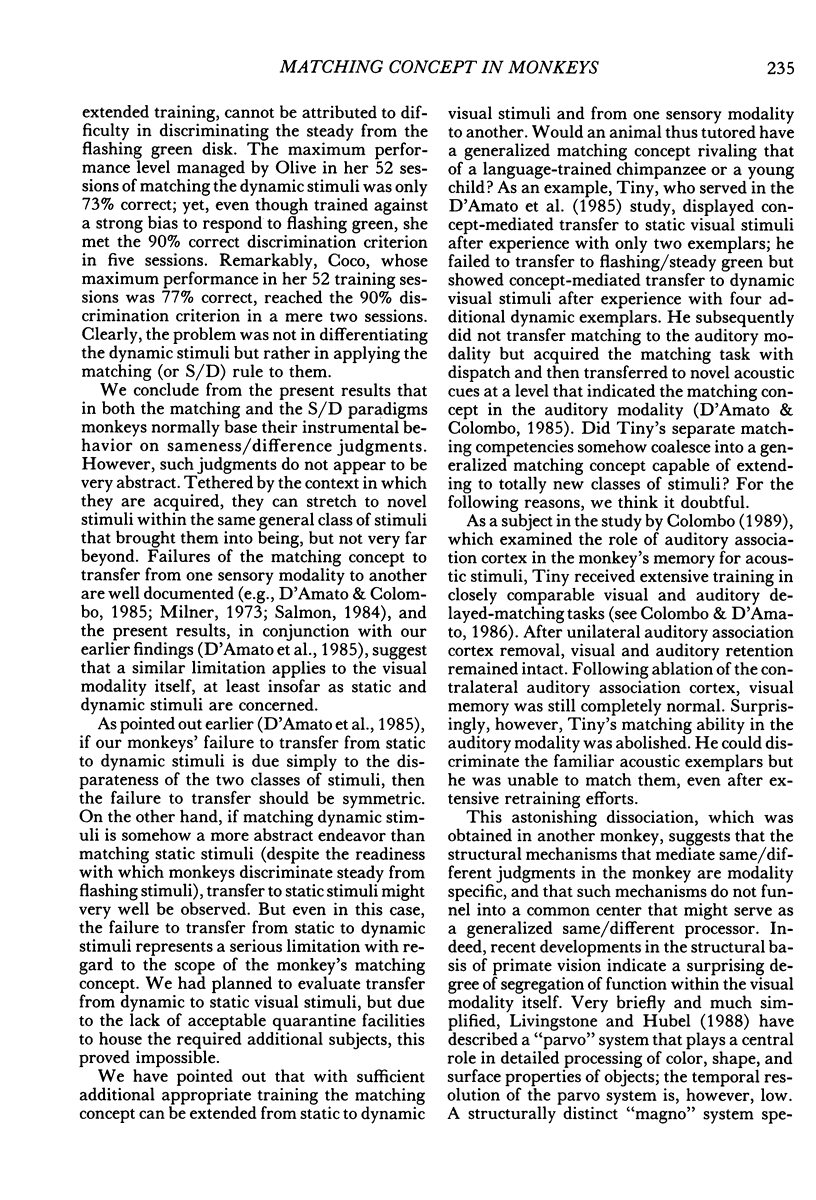
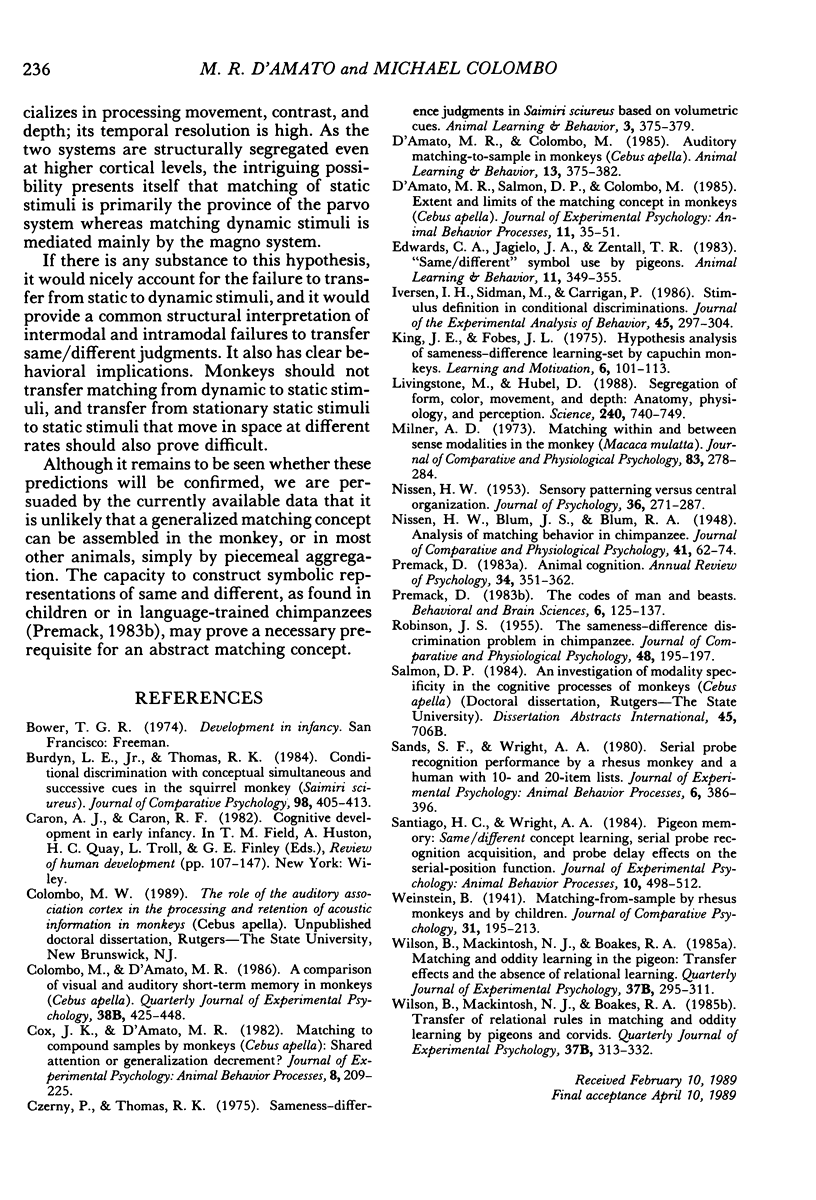
Selected References
These references are in PubMed. This may not be the complete list of references from this article.
- Burdyn L. E., Jr, Thomas R. K. Conditional discrimination with conceptual simultaneous and successive cues in the squirrel monkey (Saimiri sciureus). J Comp Psychol. 1984 Dec;98(4):405–413. [PubMed] [Google Scholar]
- Colombo M., D'Amato M. R. A comparison of visual and auditory short-term memory in monkeys (Cebus apella). Q J Exp Psychol B. 1986 Nov;38(4):425–448. [PubMed] [Google Scholar]
- D'Amato M. R., Salmon D. P., Colombo M. Extent and limits of the matching concept in monkeys (Cebus apella). J Exp Psychol Anim Behav Process. 1985 Jan;11(1):35–51. doi: 10.1037//0097-7403.11.1.35. [DOI] [PubMed] [Google Scholar]
- Iversen I. H., Sidman M., Carrigan P. Stimulus definition in conditional discriminations. J Exp Anal Behav. 1986 May;45(3):297–304. doi: 10.1901/jeab.1986.45-297. [DOI] [PMC free article] [PubMed] [Google Scholar]
- Livingstone M., Hubel D. Segregation of form, color, movement, and depth: anatomy, physiology, and perception. Science. 1988 May 6;240(4853):740–749. doi: 10.1126/science.3283936. [DOI] [PubMed] [Google Scholar]
- Milner A. D. Matching within and between sense modalities in the monkey (Macaca mulatta). J Comp Physiol Psychol. 1973 May;83(2):278–284. doi: 10.1037/h0034427. [DOI] [PubMed] [Google Scholar]
- ROBINSON J. S. The sameness-difference discrimination problem in chimpanzee. J Comp Physiol Psychol. 1955 Jun;48(3):195–197. doi: 10.1037/h0042463. [DOI] [PubMed] [Google Scholar]
- Sands S. F., Wright A. A. Serial probe recognition performance by a rhesus monkey and a human with 10- and 20-item lists. J Exp Psychol Anim Behav Process. 1980 Oct;6(4):386–396. [PubMed] [Google Scholar]
- Santiago H. C., Wright A. A. Pigeon memory: same/different concept learning, serial probe recognition acquisition, and probe delay effects on the serial-position function. J Exp Psychol Anim Behav Process. 1984 Oct;10(4):498–512. [PubMed] [Google Scholar]


